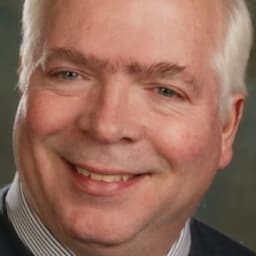Lately, Federal Reserve Chair Jerome Powell’s version of plain speaking almost makes one yearn for the days of Alan Greenspan’s tendency toward cryptic comments. It was the longtime Fed chair, after all, who once told a senator, “If I seem unduly clear to you, you must have misunderstood what I said.”
For Greenspan, it was the very essence of central banking “to mumble with great incoherence.” But the 2008-09 financial crisis changed all that.
First, former Fed chairs Ben Bernanke and Janet Yellen felt it was important to reassure market participants with “forward guidance,” a technique that seems to have outlived its usefulness because it too often sets the central bank in a policy glide path.
Bernanke also instituted the press conference, to follow the policymaking Federal Open Market Committee (FOMC) meeting four times a year. Powell expanded the practice to all eight meetings, so that every meeting could be “live”—that is, ready to change monetary policy and let the press explore the meaning of the changes.
But Powell also stressed he wanted to get away from the gobbledygook of his economist predecessors, and, as a non-economist himself, explain monetary policy in plain language. He has said he wants to speak to Main Street, not just Wall Street. Still, whatever his audience, the message needs to come across clearly if he is going to be talking all the time.
However, his effort to avoid jargon means he also avoids precision in communicating with market participants who are attuned to the jargon. Combined with Powell’s undeniable tin ear—he seems to have little inkling what impact his remarks will have on markets—this plain speaking arguably creates more confusion than Greenspan’s mumbled incoherence.
Indeed, many of Powell’s remarks border on jargon, and are often taken as such. When Powell described the quarter-point cut at the FOMC meeting in late July as a “mid-cycle adjustment” it was a familiar phrase to market participants who thought it cast doubt on any further rate cuts because of the history of that term.
Admittedly, the Fed is walking a tightrope. It's trying to read positive data as a sign of a relatively strong economy that doesn’t urgently need monetary stimulus, while justifying more stimulus.
Of course, Bernanke and Yellen had the luxury of not having to make many decisions. During their respective tenures, the Fed lowered its benchmark Fed funds rate to near zero and left it there for several years. The differences of opinion at the FOMC were solely about how soon they should start raising rates.
There were dissenters along the way, but nothing like the to-ing and fro-ing of the past two meetings, as dissenters opposed a failure to cut rates one month and then opposed rate cuts the next.
One consequence of a press conference after every FOMC meeting is that Powell gets a lot of screen time. We see and hear way more from him on monetary policy than probably any of his predecessors.
The administration’s delay in filling the two empty seats on the board of governors has also contributed to a vacuum that Powell fills. Of the five current members, vice chair for supervision Randal Quarles and small bank representative Michelle Bowman won’t normally comment on monetary policy, leaving only Powell and two governors to address issues.
Regional bank chiefs will speak often enough in their districts or at big conferences, but most of them don’t get to vote in any given year. Which means they get less of a national audience, especially when they are competing with the chair to be heard.
George Orwell’s classic dystopian novel, 1984, introduced Newspeak, a streamlined version of English to make Big Brother’s pronouncements clearer. That didn’t work too well. Words often turned out to mean the opposite of what they seemed.
Powell’s experiment hasn’t worked too well, either. It is tempting to say it is time for central bankers to go quiet again, but that would probably lead to even greater confusion.
One solution might be to have another official take part in the press conference—either New York Fed Chief John Williams in his capacity as vice chair of the FOMC or Richard Clarida, vice chair of the Fed, or both.
Vice President Luis de Guindos regularly joins President Mario Draghi at the ECB press conference, though admittedly he doesn’t say much.
But then Powell is no Draghi. The former Bank of Italy governor has his finger on the pulse of the market and commands the full gamut of communication – from the bazooka “whatever it takes” to his masterful management of expectations for the pending package of monetary easing.
Powell could use some help and there’s no reason he should be alone at the podium. Inevitably, of course, journalists would start directing their questions to Williams or Clarida to get answers markets can rely on. But the public might be better served that way.
